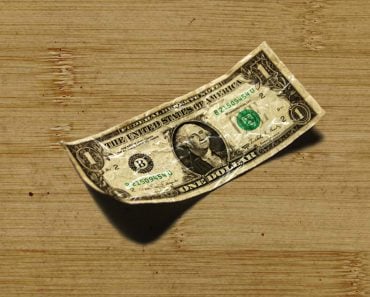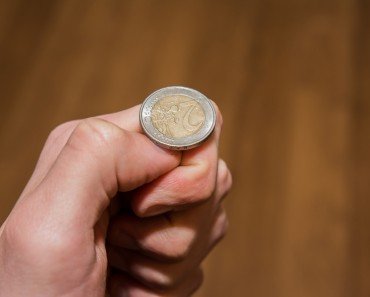Table of Contents (click to expand)
The notched edges on certain coins were initially designed to prevent people from filing the edges down when coins were made of more precious metals.
When you walk down the street, coins jangling in your pocket, it’s nice to know that you have some spare change on hand, but how often do you ever stop and think about those quarters, dimes, nickels and pennies? Have you ever considered why those coins are different sizes? What they’re made of? And, perhaps most mysteriously, why some coins have ridges on the edges, while others don’t?
If you blindly go through life accepting the way things are, then this probably isn’t the site for you, but if your curiosity is piqued, then read on, to learn once and for all why some types of coin currencies are notched on the edges.

Short Answer: The notched edges on certain coins were initially designed to prevent people from filing the edges down when coins were made of more precious metals.
Recommended Video for you:
Coins And Criminals
Today, coins are almost exclusively made from copper, nickel and zinc – rather inexpensive metals – so coins are not actually worth their weight in that particular metal. However, that wasn’t always the case. Back in 18th century America, your pocketful of coins was worth quite a bit more than it is now, relatively speaking. In the 1700s, there were also quite a few more coins in existence, including $10, $5 and $2.50 coins. These three types of coins were made of an equivalent amount of gold ($10 coin = $10 in gold, $5 coin = $5 in gold, etc.). Smaller coin denominations, including dollar, half-dollar, quarters, dimes and nickels, were worth their weight in silver. In America, one-cent coins weren’t introduced until 1864.
As you can see, walking around with a pocketful of change made of pure gold and silver was a lot more exciting than having your pants weighed down by “useless” change today. This also presented an opportunity for less savory individuals to take advantage of the design and carefully file off the edges of these gold and silver coins. The shavings weren’t much, but they certainly added up, and if the process was done precisely enough, it was very difficult to tell when a coin had been shaved down. Essentially, $.50 – $1 of value could be shaved off, yet the $9 or $9.50 coin could still be used to buy $10 of goods. This sneaky behavior was known as coin clipping, and it became a real problem, as it devalued the currency, but many people were doing it!
When enough shavings had been gathered, these criminals could trade in the precious metal and make a tidy profit. This didn’t escape the notice of the US government, who was in charge of regulating currency, and they had to come up with a solution. The clever political minds of the time came up with the idea of adding those recognizable notches to the edges of coins, a process called “reeding”, when the coins were made.
To be fair, this wasn’t the first time this had been done. Reeding had been present on British coinage and other European currencies as early as the 1500s, but America has never had a problem stealing things from other nations (cough, cough, National Anthem…). Following that, if the edges of the coin were shaved off to steal some of that precious metal, it would be very obvious to business owners and bankers, who could reject the coins or send them back to the government to be destroyed.
Now, for those of you with a handful of coins in front of you, one thing has surely not escaped your notice… only half-dollars, quarters and dimes have these ridges (and $10, $5 and $2.50 coins no longer exist). The coins of lesser value, such as nickels – and later, pennies – were not valuable enough for coin clipping, so it was rarely done, and the ridges were not included.
Reeding Coins In The Modern World
The story isn’t over there, however. The Gold Standard for coins was eliminated during the Great Depression, and the silver standard followed suit in 1965. This meant that new coin compositions had to be used – ones of considerably lower value. Now, despite their color, quarters, dimes and nickels contain 0% silver, but plenty of those cheaper elements mentioned earlier (zinc, copper and nickel). In other words, when someone throws coins at you, they’re not being generous.
When this change occurred, the US mints saw no reason to replace all of the machinery that had been outfitted with the technology to apply the reeding to these coins, so the tradition continued. That may seem like a rather unsatisfying answer, but in truth, there is a greater purpose that people didn’t realize until the 20th century. Having some coins with ridges and some without helped to differentiate between similarly sized coins (pennies and dimes/nickels and quarters). With quarters and dimes that contain the reeding, as well as nickels and pennies that don’t, it helps people who have vision impairment know which coins they are about to spend on a purchase, or prevent them from jamming a nickel repeatedly into a gumball machine.
The ironic thing, of course, is that coins are far less frequently used in the United States as they once were, due to the availability and convenience of paper currency. So while this solution for visually impaired people is excellent when it comes to coins, all paper currency is presently the same size, which is not the case in many other countries. In the Eurozone, Australia, Malaysia, just to name a few, each denomination of currency is a different size. In other countries, such as Canada, clever currency designers have even included Braille on the bills to make them more recognizable.

Maybe it’s time for the United States to steal a few more ideas and keep up with the changing times!













